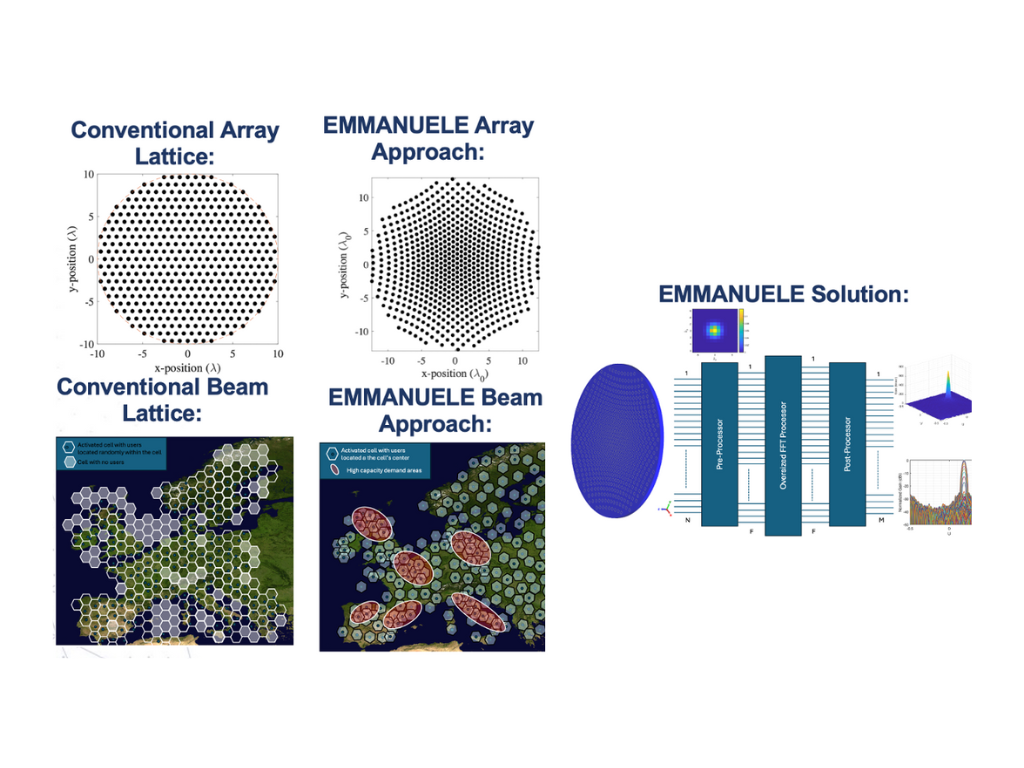Efficient Digital Beamforming technique compatible with Non-Uniform Beam and
Array lattices (EMMANUELE)

The EMMANUELE project aims to surmount the limitations associated with Fast Fourier Transform (FFT) uniformity using Non-Uniform FFT (NUFFT). Accordingly, a power-efficient digital beamforming technique will be devised to accommodate irregular arrays and beam lattices, enabling full steering flexibility for a high number of beams. This approach is particularly relevant for many satellite communication systems, especially non-geostationary satellites, which often face greater constraints on power and mass due to their smaller platform capabilities.
The project at a glance
About
The growing demand for high and diverse data rates in specific regions of the Earth necessitates a degree of flexibility in satellite payloads. One of the main component that has to be flexible, and reconfigurable is the beamforiming function that in todays satellite deployment are fixed to a regular grid of beams generated by regular lattice antennas.
The standout feature of the EMMANUELE project’s solution is its reconfigurability, freeing it from the constraints of traditional regular beam frameworks—a significant limitation in current systems such as Starlink. This adaptability enables dynamic coverage adjustments, optimising network performance and resource utilisation while significantly reducing the satellite’s mass, power consumption, and costs.
A graphical representation of this innovative approach is provided in the following figure, illustrating its potential to improve network efficiency and user experience by adapting to varying user locations and population densities.

The EMMANUELE project has two primary objectives:
1) The overarching goal is to innovate and rigorously test a new generation of power-efficient digital beamforming techniques. These techniques are specifically designed to overcome the limitations of traditional Fast Fourier Transform (FFT) methods, which require uniformity.
2) The project aims to create a digital beamforming solution fully compatible with irregular antenna arrays and non-standard beam lattice configurations. A key feature of this approach is its ability to provide comprehensive steering flexibility across a large number of beams. This directly addresses the unique challenges of non-geostationary satellite communication (satcom) systems, which often contend with the limited power and mass capacities of smaller satellite platforms.
Organisation and Partners
European Space Agency
Interdisciplinary Centre for Security, Reliability and Trust (SnT)
Fonds National Recherche (FNR)
Project team
Keywords
Beamforming
Satellite Communications
Onboard Processors
Antenna Design